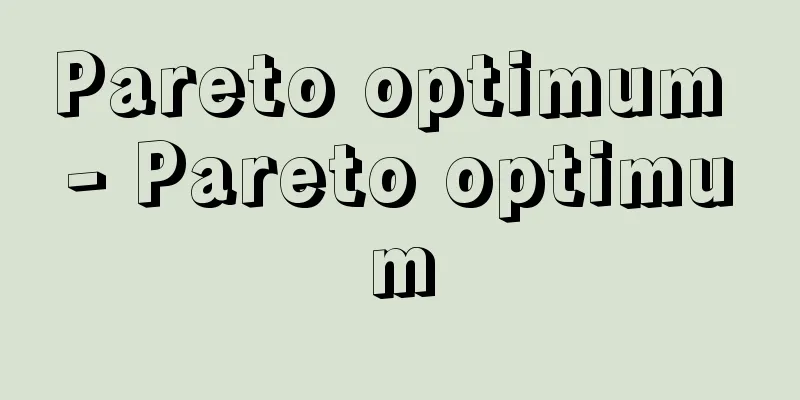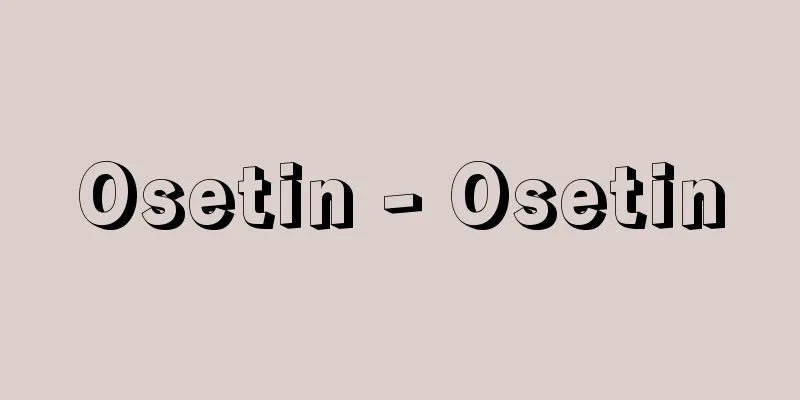Pareto optimum - Pareto optimum

|
It is a state in which no one's satisfaction can be increased without decreasing the satisfaction of other individuals. In other words, no matter how much resource allocation is changed, a more socially favorable state cannot be achieved than the current state. It is extremely difficult to transform the value judgments of individuals into a single value judgment for society as a whole, but Pareto optimality is a relatively flexible criterion and a concept that is easy to agree on. It was coined by V. Pareto, and became widespread with the development of new welfare economics, and the name Pareto bears has become established. Pareto optimality is achieved in a perfectly competitive market, where important laws are established, such as each individual obtaining maximum satisfaction and companies achieving maximum profits. However, Pareto optimality only concerns resource allocation and does not touch on income distribution at all. In addition, there are an infinite number of Pareto optimal states, and there are limitations such as the inability to determine which is better among them. In order to achieve Pareto optimum, the marginal rates of substitution between individuals must be equal. The curve that connects the points where the marginal rates of substitution between the two individuals are equal is called the "contract curve." All points on the contract curve are Pareto optimum. If the initial endowment is point J, the corresponding Pareto optimum point will be any point on the contract curve, and cannot be uniquely determined. Furthermore, for the economy as a whole to achieve Pareto optimum, the marginal rate of substitution between the consumption of X and Y must be equal to the marginal rate of transformation required to produce X and Y (the absolute value of the slope of the tangent to the production possibilities curve). If all markets were perfectly competitive, the relevant marginal rate of substitution would be equal to the relevant price ratio, and thus Pareto optimum would be achieved. In addition, when the Pareto optimal condition does not hold in a part, the second-best theory assumes this and considers the optimal problem in the remaining part. [Koichi Hatanaka] [References] | | |Source: Shogakukan Encyclopedia Nipponica About Encyclopedia Nipponica Information | Legend |
|
他の個人の満足を減ずることなしには、いかなる人の満足も増すことができない状態をいう。いいかえれば、どのような資源配分の変更を行っても、現状以上に社会的により好ましい状態を達成できないことをいう。個々人の価値判断を社会全体として一つの価値判断に形成するのはきわめて困難であるが、パレート最適は比較的柔軟性のある規準であって、人々の同意を得やすい概念といえよう。これは、V・パレートによって創唱されたものであり、新厚生経済学の発展とともに普及し、パレートの名を冠する名称が定着した。パレート最適は完全競争市場において達成され、そこでは各個人は最大の満足を得、企業は利潤最大化が達成されるなど、重要な法則が成立する。しかし、パレート最適は資源配分のみに関与し、所得分配についてはなんら触れることがない。また、パレート最適の状態は無数に存在し、それらの間の優劣は決定できないなどの限界がある。 パレート最適が達成されるためには、個人間の限界代替率が等しくならなければならない。両個人の間の限界代替率が等しくなった点を結んだ曲線を「契約曲線」という。契約曲線上のすべての点はパレート最適である。もし初期賦存量がJ点ならば、それに対応するパレート最適点は契約曲線上の任意の点となり、一義的に決定することはできない。 さらに経済全体でパレート最適が達成されるためには、X財とY財の消費の限界代替率が、X財とY財を生産するための限界変形率(生産可能性曲線の接線の傾きの絶対値)に等しくならなければならない。 もしもすべての市場が完全競争的ならば、該当する限界代替率が該当する価格比に等しくなるから、パレート最適が達成される。 なお、一部分においてパレート最適条件が成立していないときに、それを前提として、残りの部分における最適問題を考察するのがセカンド・ベスト理論である。 [畑中康一] [参照項目] | | |出典 小学館 日本大百科全書(ニッポニカ)日本大百科全書(ニッポニカ)について 情報 | 凡例 |
Recommend
《We Insist!》 - Winsist
…the American black drummer who contributed most ...
Government Public Relations - Gyosei Kouhou
Public relations is a communication activity that ...
Melanosis - English spelling
A condition in which pigmentation occurs later in ...
Internet Telephone - Internet Denwa
A telephone service that uses Internet lines, conv...
Good harvest - Housaku
〘 noun 〙 A large harvest of agricultural products....
Menstrual abnormalities -
What kind of disease is it? <Pay attention if ...
Sanatana-dharma (English spelling)
…However, there is no exact Indian equivalent of ...
Orange (English spelling)
A city just west of Newark, New Jersey, United Sta...
Rouffignac (English spelling)
A village in the Dordogne department in southweste...
Uetsu Line
...The main stops on the route are Shibata, Murak...
Izanagi-no-Mikoto and Izanami-no-Mikoto
The name of a god that appears in Japanese mytholo...
Waterloo - Waterloo (English spelling)
A city in Walloon Brabant in central Belgium, fam...
Variable costs - kahenhi
...However, in traditional economics, this expend...
Gion
[1][1] (Abbreviation of Giju Gikko Dokuon , where ...
Takemoto Koshijidayu
A Gidayu performer. His second son was a Meiji er...









